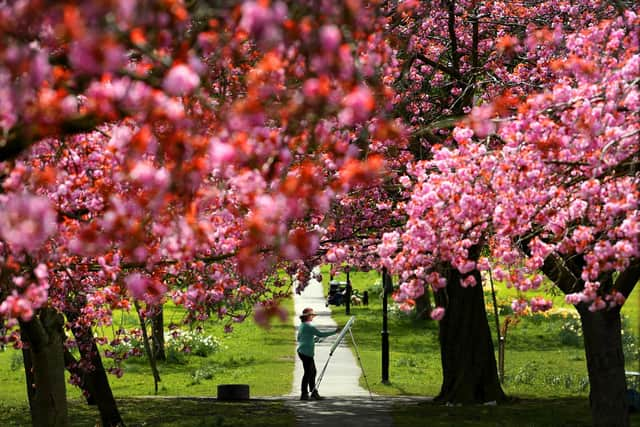Stray Defence Association says attempt to classify cherished parkland as 'common land' risks opening can of worms
and live on Freeview channel 276
The latest twist in the long history of the much-loved open grassland, which wraps round Harrogate town centre, has been triggered by an attempt by Open Spaces Society to have its 200 acres designated as 'common land'.
Founded in 1865, this national organisation is a registered charity and Britain's oldest conservation group seeking to protect public rights of way and open spaces.
Advertisement
Hide AdAdvertisement
Hide AdBut its intervention in Harrogate is not being welcomed by the Stray Defence Associaton, founded in 1933.


An unhappy SDA argues the Stray is already one of the most protected green spaces by law in Britain.
It claims OSS's recent application to register it as "common land" with North Yorkshire County Council is not only not needed but may actually be counter-productive.
"We cannot see the sense of this,” said Judy d'Arcy Thompson, chair of the SDA.
Advertisement
Hide AdAdvertisement
Hide Ad"What the Open Spaces Society are trying to achieve elsewhere in the country is laudable but the Stray is already protected by Act of Parliament as a public open space.
“It is owned by the Duchy of Lancaster, the estate of the British sovereign, gifted to the people of Harrogate with severe restrictions on how it is used.
"Classifying it as common land would create more problems than it solves.”
OSS’s application to the county council is part and parcel of the long-running debate within Harrogate on how often the Stray should be used for events, in particular, large commercial events.
Advertisement
Hide AdAdvertisement
Hide AdThe arguments turned fiercer after nine water-logged nine days in 2019 when the damaged Stray at West Park hosted the badly-received UCI road world cycling championships.
The controversial event was only permitted by a temporary suspension of the Harrogate Stray Act 1985 and all efforts to loosen the rules in recent years to use the Stray more often have been abandoned after public and political opposition, including from the SDA.
In that context, the Stray Defence Association argues that the OSS’s intervention is unwarranted.
What’s more, if successful, it may even make matters worse.
Judy d'Arcy Thompson, chair of the SDA, says its views were backed by late Harrogate historian Malcolm Neesam, an acknowledged expert on the town’s story.
Advertisement
Hide AdAdvertisement
Hide Ad"Before he died, Malcolm was very much of the opinion that the maps of the Stray that the Open Spaces Society were using were wrong about which parts of Harrogate are actually in the Stray.
"In classifying the wrong parts of Stray as common land it could confuse matters and undermine its legal protections.”
The application by the Open Spaces Society will now be considered by the Commons Registration Officer to ensure that it has been made correctly and with the relevant supporting documentation.
Should that be the case, the county council will put the application through a public consultation period in accordance with the Commons Act 2006 requiring notices posted around The Stray.
And that really worries the Stray Defence Association.
Advertisement
Hide AdAdvertisement
Hide Ad"Once you have signs round the Stray asking people whether they want it to be common land, it could reopen the debate about how it is used once more,” said Judy d'Arcy Thompson.
"It risks diluting protections rather than strengthening them.”